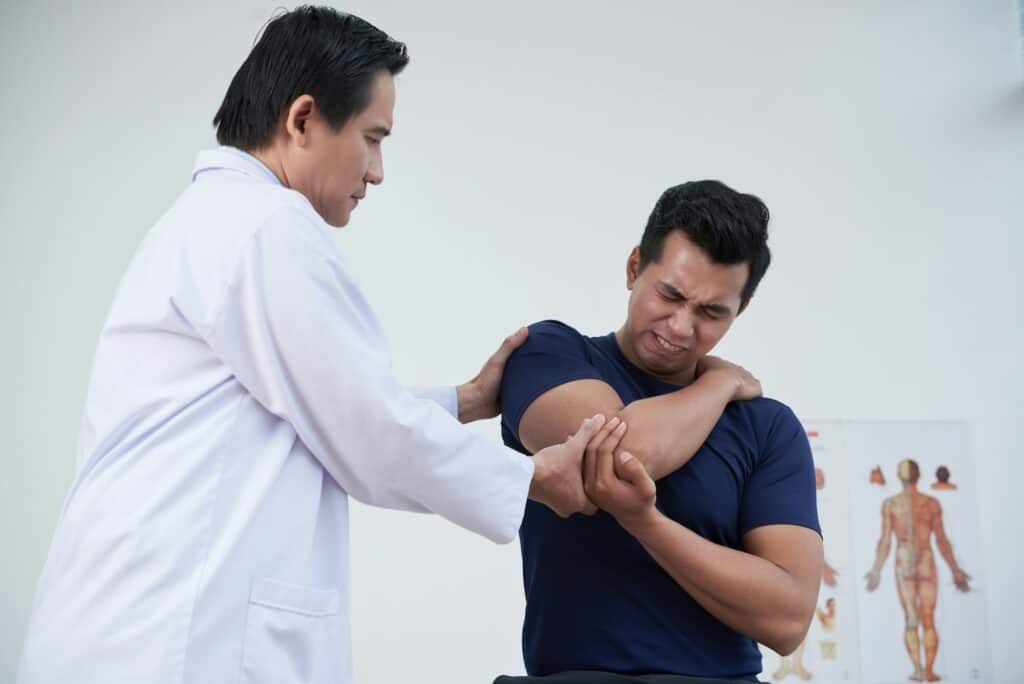Injury rehabilitation is a critical process that helps individuals regain their strength, mobility, and overall well-being after experiencing physical trauma. From sprains and fractures to more severe injuries like torn ligaments or muscle tears, the journey to recovery often involves a multifaceted approach. In this article, we delve into the various techniques utilized in injury rehabilitation, exploring how professionals help patients bounce back from setbacks and regain their quality of life.
Understanding Injury Rehabilitation: An Overview
Injury rehabilitation is a comprehensive process aimed at restoring function and minimizing disability following physical trauma. It encompasses a range of strategies tailored to individual needs, with the ultimate goal of optimizing recovery outcomes.
From minor sprains to major fractures, rehabilitation plays a crucial role in facilitating healing and returning individuals to their pre-injury level of activity. Understanding the principles and components of injury rehabilitation is essential for both healthcare professionals and patients alike.
The Importance of Effective Injury Rehabilitation
Effective injury rehabilitation is paramount in ensuring optimal recovery and minimizing long-term complications. It not only focuses on addressing the physical aspects of injury but also considers the psychological and emotional impact that may accompany it.
By providing comprehensive care and support, effective rehabilitation programs empower individuals to regain confidence in their abilities and resume their daily activities with minimal limitations.
Key Techniques in Injury Rehabilitation
Injury rehabilitation encompasses a spectrum of techniques tailored to address various aspects of physical recovery following an injury. From restoring mobility to managing pain and preventing re-injury, these techniques play a vital role in promoting healing and restoring function. Here are five key techniques commonly employed in injury rehabilitation:
- Physical Therapy Exercises: Physical therapy exercises are a cornerstone of injury rehabilitation, focusing on improving strength, flexibility, and range of motion in affected muscles and joints. These exercises are carefully selected and tailored to each individual’s specific needs and goals, helping to rebuild strength, restore function, and promote overall recovery.
- Manual Therapy: Manual therapy techniques, such as massage, joint mobilization, and soft tissue manipulation, are used to address musculoskeletal imbalances, reduce pain, and improve tissue flexibility. By applying hands-on interventions, manual therapists can release tight muscles, realign joints, and promote circulation, facilitating the healing process and enhancing overall function.
- Modalities: Modalities such as heat therapy, cold therapy, and electrical stimulation are commonly employed in injury rehabilitation to promote healing, reduce pain, and improve tissue function. Heat therapy increases blood flow and relaxes muscles, while cold therapy reduces inflammation and numbs pain. Electrical stimulation techniques can help strengthen muscles, improve circulation, and alleviate pain, enhancing the effectiveness of rehabilitation efforts.
- Functional Training: Functional training focuses on improving movement patterns and performance of everyday activities, making it an essential component of injury rehabilitation. By simulating real-life movements and challenges, functional exercises help individuals regain strength, balance, and coordination in a contextually relevant manner, facilitating a smoother transition back to daily life and activities.
- Education and Injury Prevention Strategies: Educating patients about proper body mechanics, injury prevention strategies, and techniques to avoid overexertion or exacerbating existing conditions is crucial in injury rehabilitation. By empowering individuals with knowledge and skills to protect themselves from future injuries, rehabilitation programs aim to promote sustained health and well-being beyond the initial recovery period.
Assessing the Extent of Injury: Initial Steps
Assessing the extent of injury is the first crucial step in developing an effective rehabilitation plan. This process involves a thorough evaluation by healthcare professionals to determine the nature and severity of the injury, identify any associated complications, and establish baseline measurements for tracking progress. Through various assessment techniques such as physical examinations, imaging studies, and functional tests, clinicians can gather valuable information to inform treatment decisions and customize rehabilitation protocols accordingly.
Developing a Customized Rehabilitation Plan
Once the extent of the injury has been assessed, healthcare professionals work collaboratively with patients to develop a personalized rehabilitation plan. This plan takes into account factors such as the type and severity of the injury, the individual’s functional goals, and any specific considerations or limitations. By tailoring rehabilitation protocols to address the unique needs and circumstances of each patient, healthcare providers can maximize the effectiveness of treatment and optimize outcomes.
Restoring Mobility: Physical Therapy Approaches
Physical therapy plays a central role in restoring mobility and function following injury. Through targeted exercises, stretches, and manual techniques, physical therapists aim to improve range of motion, strength, and flexibility in affected muscles and joints. Additionally, they may utilize assistive devices and therapeutic modalities to support rehabilitation efforts and enhance recovery outcomes.
Strengthening Muscles and Ligaments: Resistance Training Methods
Strengthening muscles and ligaments is an essential component of injury rehabilitation, particularly for conditions involving musculoskeletal injuries. Resistance training methods such as weightlifting, resistance bands, and bodyweight exercises are commonly used to gradually increase the strength and endurance of affected tissues. By progressively challenging the muscles and ligaments in a controlled manner, individuals can rebuild lost strength and stability, reducing the risk of re-injury and improving overall function.
Pain Management Strategies in Injury Rehabilitation
Pain management is a critical aspect of injury rehabilitation, as persistent pain can significantly impede progress and quality of life. Healthcare providers employ various strategies to address pain, including medication, manual therapy techniques, modalities such as heat and cold therapy, and psychological interventions such as relaxation techniques and cognitive-behavioral therapy. By addressing pain comprehensively and holistically, rehabilitation programs aim to improve comfort, enhance participation in therapy, and support overall recovery efforts.
Utilizing Modalities: Heat, Cold, and Electrical Stimulation
Modalities such as heat, cold, and electrical stimulation are commonly used in injury rehabilitation to promote healing, reduce pain, and improve tissue function. Heat therapy helps to increase blood flow and relax muscles, while cold therapy can reduce inflammation and numb pain. Electrical stimulation techniques, including transcutaneous electrical nerve stimulation (TENS) and neuromuscular electrical stimulation (NMES), can help to strengthen muscles, improve circulation, and alleviate pain. By incorporating these modalities into rehabilitation protocols, healthcare professionals can enhance the effectiveness of treatment and facilitate faster recovery.
Enhancing Flexibility and Range of Motion
Enhancing flexibility and range of motion is essential in injury rehabilitation to prevent stiffness, improve joint function, and restore mobility. Stretching exercises, joint mobilizations, and manual therapy techniques are commonly used to target tight muscles and restricted joints, allowing for improved flexibility and movement. By incorporating flexibility training into rehabilitation programs, individuals can regain their ability to perform daily activities with greater ease and comfort.
The Role of Manual Therapy Techniques
Manual therapy techniques, including massage, joint mobilizations, and soft tissue manipulation, play a valuable role in injury rehabilitation by addressing musculoskeletal imbalances, reducing pain, and improving tissue flexibility. These hands-on interventions can help to release tight muscles, realign joints, and promote circulation, facilitating the healing process and enhancing overall function. By incorporating manual therapy into rehabilitation protocols, healthcare providers can provide targeted care and support to individuals recovering from injury.
Incorporating Functional Training into Rehabilitation
Functional training focuses on improving movement patterns and performance of everyday activities, making it a valuable component of injury rehabilitation. By simulating real-life movements and challenges, functional exercises help individuals regain strength, balance, and coordination in a contextually relevant manner. By progressively introducing functional activities into rehabilitation programs, healthcare professionals can facilitate a smoother transition back to daily life and activities, ultimately promoting independence and long-term success.
Addressing Psychological Factors in Recovery
Psychological factors play a significant role in the recovery process following injury, influencing pain perception, motivation, and adherence to rehabilitation protocols. Healthcare providers recognize the importance of addressing these factors and may incorporate strategies such as cognitive-behavioral therapy, relaxation techniques, and goal setting to support patients’ emotional well-being and overall recovery. By fostering a positive mindset and addressing any psychological barriers to progress, rehabilitation programs can enhance outcomes and promote a holistic approach to healing.
Monitoring Progress and Adjusting the Rehabilitation Plan
Monitoring progress is essential in injury rehabilitation to track improvements, identify any setbacks or barriers to recovery, and adjust treatment plans accordingly. Healthcare providers regularly assess various indicators such as range of motion, strength, pain levels, and functional abilities to gauge progress and make informed decisions about the next steps in rehabilitation. By closely monitoring individuals’ response to treatment and adapting interventions as needed, healthcare professionals can optimize outcomes and ensure that rehabilitation efforts remain effective and aligned with patients’ goals.
Preventing Re-Injury: Education and Injury Prevention Strategies
Preventing re-injury is a key priority in injury rehabilitation, as recurring injuries can delay recovery and compromise long-term outcomes. Healthcare providers educate patients about proper body mechanics, injury prevention strategies, and techniques to avoid overexertion or exacerbating existing conditions. By empowering individuals with knowledge and skills to protect themselves from future injuries, rehabilitation programs aim to promote sustained health and well-being beyond the initial recovery period.
Lifestyle Modifications and Continued Support
Lifestyle modifications and continued support are essential components of long-term success in injury rehabilitation. Healthcare providers work with patients to identify lifestyle factors that may impact recovery, such as diet, exercise habits, and stress management techniques. By promoting healthy lifestyle behaviors and providing ongoing support, rehabilitation programs aim to empower individuals to maintain their progress, prevent relapse, and enjoy a high quality of life following injury.
Additionally, continued follow-up care and support from healthcare professionals can help individuals navigate any challenges or setbacks that may arise, ensuring that they remain on track toward their recovery goals.
Understanding the diverse techniques employed in injury rehabilitation is pivotal for ensuring a successful recovery journey. Whether it’s restoring mobility, managing pain, or addressing psychological factors, the comprehensive approach offered by professionals is vital.
If you’re seeking effective injury rehabilitation services, look no further than ActiveMed Integrative Health Center in Encinitas. Our dedicated team is committed to providing exceptional natural medical services to assist you in achieving your health and wellness goals.
For personalized care and support, contact us today at 858-673-4400 or email info@activemedhealth.com. Take the first step towards a healthier, more vibrant you with ActiveMed Integrative Health Center.





